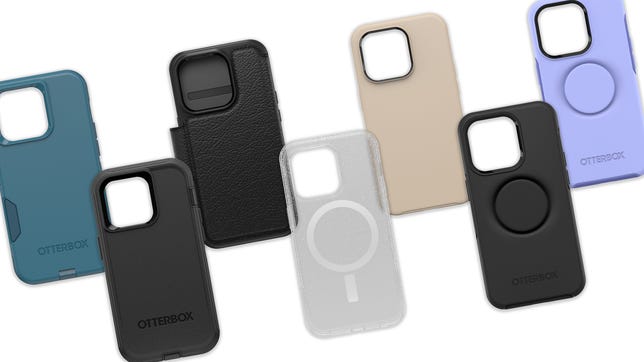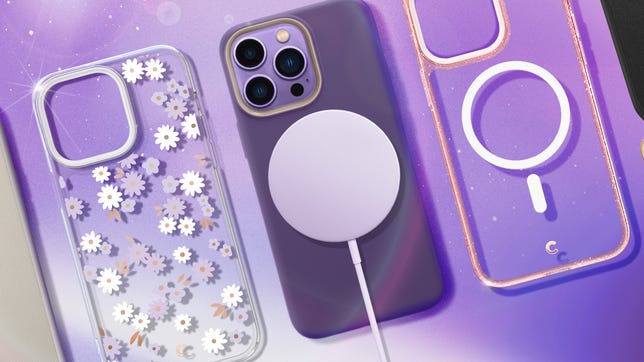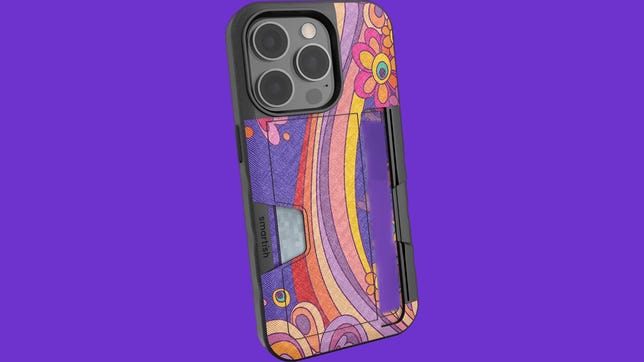Technologies
Best iPhone 14 and iPhone 14 Pro Cases You Should Buy Now
Protect your iPhone with these cases.

This story is part of Focal Point iPhone 2023, CNET’s collection of news, tips and advice around Apple’s most popular product.
In this article:
Apple’s iPhone has become more durable over the years, but if you drop it the wrong way — or on the wrong surface — it’s still susceptible to being damaged in both major (cracked screen or cracked back) and minor ways (dings and scrapes). That’s why whenever you buy a new phone you should consider investing in a high-quality case to protect it.
What to look for in an iPhone case
If you’ve bought an iPhone 14 and are looking for a case, you probably know that each new model has its own specific case, so make sure you get the correct one. Note that the Pro versions, which include the iPhone 14 Pro and larger iPhone 14 Pro Max, sport extra cameras that require a larger cutout on the back of your case.
Whether you need the best iPhone 14 Pro case or the best case for the standard iPhone 14 model, we’ve rounded up some great everyday case options in a variety of styles and prices, from slimmer to more rugged. We’ve tried all these cases with an iPhone 14 and will continue to add other top cases as we find others that we think are worthy of this list.
Best iPhone 14 cases
Speck has brought many of its iPhone 13 case designs to the iPhone 14, including such popular transparent models as the Presidio Perfect-Clear and Perfect-Clear Grips, and the Presidio2 Pro. Speck’s cases with built-in MagSafe cost around $50, while its Candyshell Pro case remains the least expensive at around $25 but does not have MagSafe. And right now, all Speck cases are 40% off so you can snag one for even less.
All the new models have good drop protection (13 to 16 feet, depending on the model) as well as Speck’s Microban antimicrobial protection. No matter which model you choose, Speck often gives a discount for first-time buyers.
MagSafe cases can get pretty pricey, but if you’re looking for an inexpensive clear MagSafe case for your new iPhone 14 series phone, Spigen’s Ultra Hybrid MagFit is a good value at around $25. Spigen also sells a non-Mag version of this case for about $8 less, and also has several other iPhone 14 case options.
OtterBox made a name for itself with its super-protective Defender series case, but most people want something less bulky these days. I like the Symmetry Series Plus cases, which come in various shades (including the new Euphoria color) and have MagSafe. The Symmetry Plus Pop case integrates a PopSockets PopGrip and is wireless charging-compatible, which is important. OtterBox offers a discount for first-time buyers on its site.
Caseology has made some decent budget cases in the past, including the NanoPop, Parallax, Skyfall and Vault. Its new Capella Mag Clear is one of the cheaper transparent MagSafe cases we’ve seen.
Lupa Legacy makes a couple of different wallet cases for the iPhone 14 models. I like the folio version that has a magnetic clasp and is made of faux leather in a variety of color options. It has three slots on the inside of the cover to store credit cards or cash, and it offers decent corner protection from drops. The faux leather looks decent (the case looks a little more expensive than it is, which is a good thing).
The only drawbacks are that there’s no MagSafe built into the case and the case doesn’t convert into a kickstand. But you can charge your phone on a wireless charging pad just fine.
One of my favorite iPhone cases right now is the Otterbox Lumen, a two-tone case that’s partially clear at the top (it’s sort of an ombre case) and has grippy silicone rubber on the sides. It comes in a few color options, including the metallic beige shown here (the blue and silver seem cool).
The Figura is a bit slimmer but is also eye-catching and available in a few interesting color combos. Both cases are MagSafe-enabled and sold exclusively at Apple and Otterbox.com.
Element Case makes its high-end $250 Back Ops X5 case for the iPhone 14, but its more affordable Special Ops X5 MagSafe case is a very likable case with beefed up corner protection and raised edges on the back and front to help prevent your screen and cameras from getting cracked. It also has good side grips. I kind of wish it came in some other color options, but that’s my only gripe. It’s a very good case.
British case-maker Gear4, now owned by Zagg, makes cases that are right up there with OtterBox and Speck, all of them lined with the company’s D3O shock-absorbing material and featuring beveled edges to protect your phone. I like the new Milan Snap (pictured) and Santa Cruz Snap, both of which are MagSafe-equipped and rated for 13-foot drop protection. However, several other case styles are available, most of them with eye-catching designs. They start at $30 for non-MagSafe cases, but most MagSafe models list for $50 to $60.
Cyrill is a sister brand to Spigen, and its cases are arguably slightly more stylish, although they cost a few bucks more. I like the UltraColor Mag ($25), and the Kajuk Mag ($27) is also pretty nice, owing to its faux «vegan» leather back. The transparent Shine Mag ($30) cases are attractively designed with «a touch of sparkle» for those who like a bit of flash in their iPhone case.
Like Lifeproof, Catalyst made a name for itself with waterproof cases, but it now focuses on standard protective case options and has two new models for the iPhone 14: the $40 Influence (pictured) is my favorite, but the new $50 Crux case is also good (both are MagSafe-enabled). They have perforations on the corners that allow you to attach various accessories (a lanyard is included, but Catalyst also sells other accessories). Both have 10-foot drop protection.
Nomad’s line of leather cases comes to the iPhone 14. However, now Nomad is offering two grades of leather — the standard variety and a higher-end Horween that costs $20 more ($70 rather than $50). At least the Horween version is designed to develop a «rugged» patina as the oils from your skin interact with the leather over time. The new Modern Leather Case is available in black, brown, English tan and a lighter natural color that I like. They’re rated for 10-foot (3-meter) drop protection and equipped with MagSafe. (Personally, I like the English tan color pictured on the left). Meanwhile, the Modern Leather Folio (pictured, middle) goes for $60 in black or brown.
There’s also a more affordable Sport version for $40 that’s equipped with MagSafe as well. It’s not a leather case, however, but does look pretty slick — it’s pictured on the right. Additionally, Nomad has a new Rugged Case with «fortified» bumpers and 15-foot drop protection that costs $50 with MagSafe.
Casetify has three base models that you can customize with any of Casetify’s eye-catchingstock designs or something more personal (like your name). New to the line is the Bounce case, which offers even more corner protection than the Ultra Impact case (both of which are MagSafe-enabled). Some of the designs are hit-or-miss, and many are geared toward teenagers.
I should note that prices appear to have gone up again. Casetify cases now start at $58 (yes, that’s high), though we should see some discounts.
This is a pretty cool option for those looking for a MagSafe case, plus a MagSafe wallet that converts into a stand. You can enjoy a relatively sleek and protective MagSafe case and really good MagSafe wallet/stand accessory that stores up to three credit cards. The wallet, also available separately, sticks well to the back of the case with a strong magnet.
The case is available in cool white (pictured), clear and smoky black, while the wallet/stand is available in multiple color options.
Rokform’s been making tough iPhone cases for years, and aside from their durability, their key feature is the ability to use them with various mounts — including bike and motorcycle mounts — that are sold separately. I personally prefer the Crystal series, but the Rugged case is slightly more, well, rugged. The new iPhone 14 cases are also MagSafe compatible.
Rokform’s iPhone 14 cases have removable magnets, and they’re compatible with wireless charging if you remove the included center magnet. «With the lower magnet still intact, you can still wireless-charge while utilizing magnetic mounting and all of our mounts,» Rokform says.
Rokform makes some mountable rugged cases for iPhones (see above), but its Eagle 3 case has a unique feature that I appreciated: A powerful MagSafe-compatible magnet built into the case.
Rokform bills the Eagle 3 as an iPhone golf case because it’s designed to stick to the metal roof poles on your golf cart, allowing you to conveniently view hole yardage info from golf GPS apps or mount your phone to capture your swing on video.
But this is also the case for someone who wants a powerful magnet so you can securely mount your phone on anything metal or have your MagSafe accessories really stick to your phone. For example, a lot of MagSafe-enabled wallets just don’t stay on your phone all that securely. With this case, they really stick. And with some MagSafe accessories, like the Clckr Stand and Grip, I actually had to work a bit to pull the accessory off.
The Eagle 3 is fairly pricey at $70, though it’s worth mentioning that Rokform offers 20% to first-time customers.
Incipio has lots of new cases for the iPhone 14, including old favorites like the Grip with MagSafe, sturdy Duo with MagSafe (12-foot drop protection), and the Organicore, an eco case that’s 100% compostable and is now available with a translucent back. It also has licensing deals with Kate Spade and Coach, and some of those cases offer eye-catching designs.
I like the new Forme with MagSafe (pictured left), AeroGrip with MagSafe and 16-foot drop protection (pictured middle) and Idol cases. You have to dig around Incipio’s site to find those cases, but they’re worth checking out. The Forme comes in some cool designs — even better than the sample shown here.
Incipio cases start at $35 for a non-MagSafe case and $45 for cases with MagSafe.
Tech21 has a range of iPhone 14 cases, including its popular Evo Check (pictured), which is equipped with MagSafe for $50. There are also several other cases to choose from, including the ultraprotective Evo Max, which is rated for 20-foot drops and has a slide cover to protect the iPhone 14’s back cameras, along with a holster you can clip to your belt.
Although they don’t have MagSafe, I’m a fan of Clckr’s cases, which feature a built-in kickstand and grip strap (it’s available in purple or black) that folds out and clicks into place on the back of your phone. Clckr sells just the stand/strap accessory to stick on the back of your phone (or on a case), but the iPhone case with the integrated kickstand accessory is better. At launch, only the clear version of the case is available, but hopefully Clckr’s faux-leather Saffiano case will return for the iPhone 14 (I liked the blue version of that for the iPhone 13).
With the stand clicked in place, you can use your device hands-free in either portrait or landscape mode. Note that you can wirelessly charge your phone with this case on, though you have to be more careful about placing it in the right spot on a wireless charging pad for it to work.
Smartish’s affordable, simple, slim cases and wallet cases return for the iPhone 14. The Wallet Slayer 2.0 case (pictured) comes in a few different designs, including the Groovy color shown here. It holds three credit cards plus cash, and you can use one of your credit cards as a kickstand. However, its one downside is that it’s not compatible with wireless and MagSafe chargers.
Smartish also sells a MagSafe case called the Gripzilla. It’s one of the most affordable MagSafe cases and is easy to grip, as its name implies.
Some people prefer not to have a case on their phone or just want something that’s very thin that offers minimal protection. If you’re that type of person, a Totallee case may just be what you’re looking for.
There are a couple models to choose from, with the frosted version (pictured right) billed as the world’s thinnest iPhone case — it’s almost paper thin. It comes in multiple color options.
The case costs $39, which seems like a lot considering how thin it is, but it is eco-friendly (it’s compostable) and does have a raised «lip» around the camera that prevents damage to the camera lens, Totallee says.
Totallee also makes a very slim clear TPU case, the «clear soft» (pictured left in the iPhone 14) that offers a little more protection for the same price. I like that one better, but it is slightly thicker.
Case-Mate makes several eye-catching cases for the various iPhone 14 models, but its squarish Blox case is the one I like the most. It comes in a variety of colors, is MagSafe-enabled, clearly has good corner protection and is reasonably priced. I’m showing the clear model on a deep purple iPhone 14 Pro, but it’s also worth checking out the other colors, including rainbow frosting.
Urban Armor Gear offers several case options for the iPhone 14 models in a variety of colors, with MagSafe versions costing $10 more than their non MagSafe counterparts. I like the Plasma (pictured middle), which comes in a variety of color options including clear, while the Lucent (left) and Civilian Series (right) are also good and available in multiple colors.
The new Plyo with MagSafe (not pictured) probably has the slimmest design, but UAG’s cases all feature good corner protection and meet military drop-test standards.
Most new phones, including the iPhone 14 series models, offer a decent level of water resistance. But if you want some added protection, Otterbox still sells its waterproof and shockproof Fre case — and the latest version is built for MagSafe accessories.
Note that the case was formerly known as the Lifeproof Fre, but after acquiring Lifeproof a few years ago Otterbox has officially made the Fre an Otterbox branded case that carries the legacy of being «designed by Lifeproof.» The case has an IP68 water-resistance rating (it’s rated to be fully submerged in two meters of water for up to an hour) and is also dust-proof. It also has a built-in screen protector and remains one of the best tough cases out there. Its biggest downside is that it’s expensive, but Otterbox sometimes has site-wide flash sales that bring its price down.
Based in Austin, Texas, Bluebonnet is named after the state flower and crafts leather-clad accessories for various Apple products, including iPhones, MacBooks, Watches and AirPods. It does make a standard full-grain leather iPhone case that’s nice, but I thought its leather wallet cases were more unique and enticing. They’re available in limited color options (black or tan) in a few different styles, including a folio case that has a magnetic clasp (shown above, at right). Both the iPhone Wallet case (above left) and Card Holder case (not shown) feature an «organic» cotton elastic finger loop for grip.
Note that Bluebonnet’s wallet cases don’t have a MagSafe option but its standard leather case is available with MagSafe.
Read more: Best Phone to Buy for 2023
How we pick the best iPhone 14 cases
Virtually every case that appears on this list has been tested by CNET’s expert reviews team on at least one of the iPhone 14 models (I tested cases using an iPhone 14 and an iPhone 14 Pro). That means actually using the phone with the case on the phone for at least a day and making sure the buttons on the phone work properly with the case on. We look at the durability of the case, corner and camera protection, and we review the material the case is made of so we can talk about such factors as how grippy the phone feels in your hand and how protective it is.
While we don’t do long-term testing of most cases, we do use some of the most popular cases for longer periods to gauge how they wear over time and see how well our phone holds up during accidental drops with the case on it. That said, we don’t do formal drop tests. However, if the case is supposed to be fully waterproof, we do test it by submerging it in water.
iPhone 14 case FAQs
How protective of an iPhone 14 case should I buy?
I personally like cases that aren’t too thick but offer decent drop protection, with a lip over the edge of the screen (sometimes referred to as a «screen bumper») and raised corners that help prevent your screen from cracking if your phone should fall face down. A folio case will more fully protect your screen.
The good news is that you don’t have to buy a super-protective iPhone 14 case like the OtterBox Defender to get good protection. Most cases are reasonably thin and still offer at least 6-foot drop protection. I did include one very thin case on this list for those who prefer minimal protection. Before you go with a case like that, just remember how much your phone costs — but it is better than having no case at all. Make sure you get a sound tempered glass screen protector for your iPhone 14 model to prevent deep scratches and safeguard the screen.
Should I get a MagSafe case for my iPhone 14?
All the iPhone 14 models are equipped with Apple’s MagSafe feature, which offers faster wireless charging with compatible chargers. It also supports optional accessories — including Magsafe wallet, mini wallets and various mounts — that adhere magnetically to the back of your phone. Like the iPhone 13, the iPhone 14 has «an array of magnets» (Apple says they’re recycled) embedded around a charging coil that can pull up to 15 watts of power.
However, if you want to use those MagSafe accessories without taking your phone out of its case, you need a phone case that’s equipped with MagSafe support. The MagSafe symbol is a circle with a short pipe below it. You can see it on clear cases, but it’s embedded on the inside of the case so if it’s nontransparent, you’ll only see it from the inside.
If you already have a MagSafe accessory — or plan on buying MagSafe accessories in the future — you’ll want to get a MagSafe compatible case; it’s a good option to have. With that in mind, the majority of the cases in this roundup are equipped with MagSafe.
Are MagSafe cases more expensive?
In general, yes — about $10 more. There are some more affordable MagSafe cases that cost around $20, but most cost upwards of $30. We see cases from certain companies that are essentially the same, but one has MagSafe and the other doesn’t, and the MagSafe version usually sells for $10 more. It may seem like a little too much to pay for something that doesn’t seem like much of an upgrade, but in time MagSafe compatibility may command less of a «tax.»
Best cases for other iPhone models
Technologies
Sora Video Limits Got You Down? Pay Up for More, Says OpenAI
Sora has opened to everyone in the US, and OpenAI is now charging for extra AI video generations.
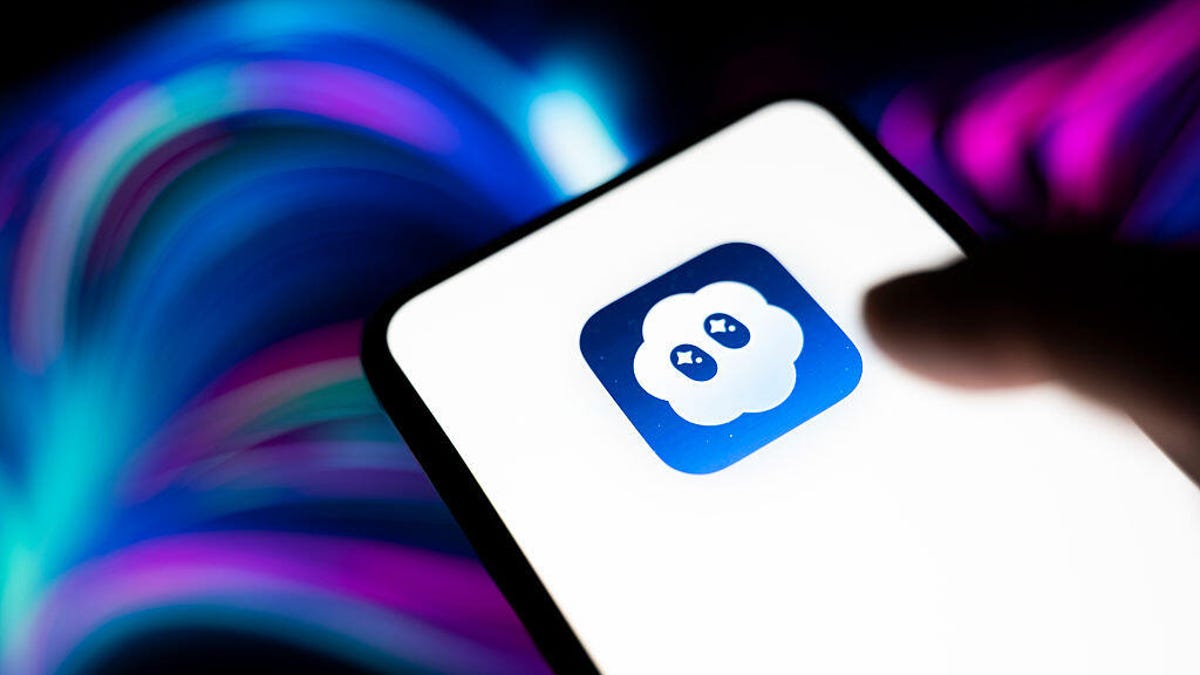
Soon after Sora dropped its invite-only requirement, OpenAI is already moving to monetize the popular AI video social media app. The company has introduced paid «video generation packs,» allowing you to purchase additional AI-generated videos after reaching the daily free limit.
Read also: Deepfake Videos Are More Realistic Than Ever. How Can You Spot if a Video Is Real or Sora AI?
Until now, you could generate around 30 videos a day for free or up to 100 for Pro accounts. Now, anyone who hits that cap will see a prompt to purchase extra «gens» through the App Store.
A small bundle of 10 extra generations costs roughly $4, according to Sora’s listing on Apple App Store, but OpenAI’s support page states that the exact credits used per video range based on factors like the video length and resolution.
Don’t miss any of our unbiased tech content and lab-based reviews. Add CNET as a preferred Google source.
OpenAI’s Bill Peebles confirmed the change in a post on X, citing increased demand and «unsustainable» economics as reasons behind the change. He also confirms the free quota options are likely temporary.
«Eventually, we will need to bring the free gens down to accommodate growth (we won’t have enough GPUs to do it otherwise!), but we’ll be transparent as it happens,» he wrote. «[i]n the meantime, enjoy the crazy usage limits.»
Read also: OpenAI’s Sora Is Getting Another Wave of New Features, Including Video Editing
Technologies
You Can Nab the Apple Watch SE 3 for a Record-Low $200 if You Act Fast
Amazon just knocked $49 off this budget-friendly wearable for the first time since its release.
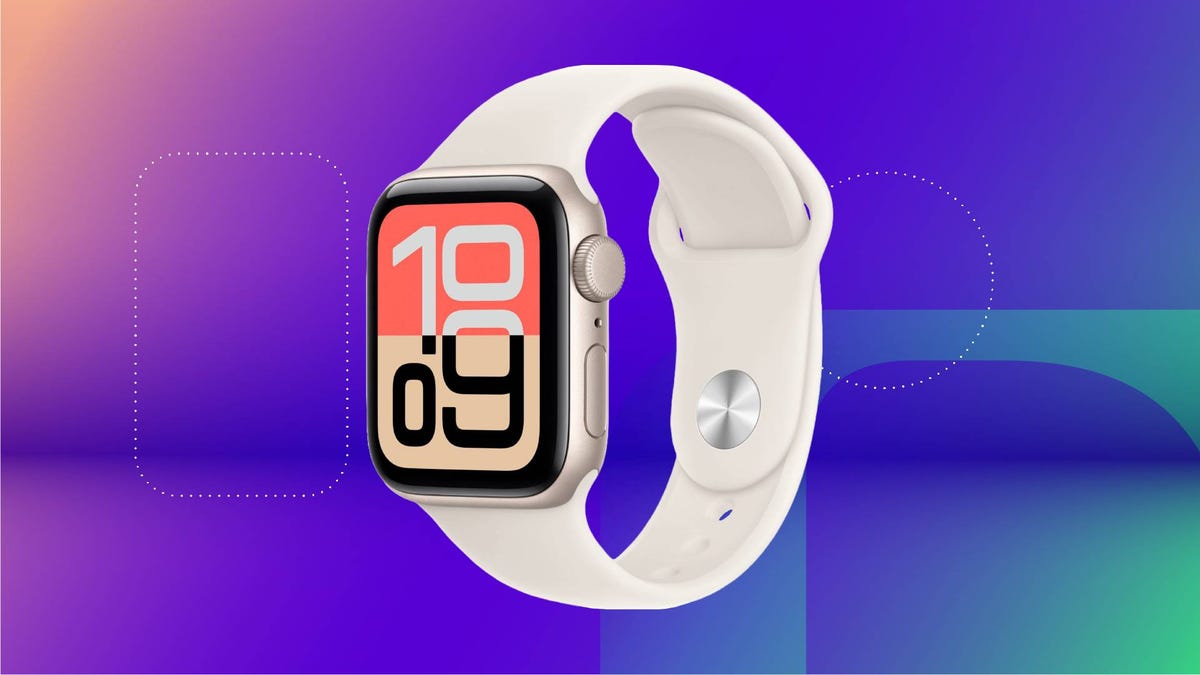
Released alongside the Series 11 and Ultra 3, the Apple Watch SE 3 is the latest budget-friendly model in Apple’s lineup. Starting at $249, it already saves you $150 compared to the Series 11, and right now you can pick it up for even less.
Amazon is offering the biggest (and practically only) discount we’ve seen since this smartwatch hit shelves, knocking it down to a record-low $200. That’s a $49 discount, but it only applies to the starlight color. We also don’t expect this deal to last long, so be sure to get your order in soon.
Even at full price, CNET smartwatch expert Vanessa Hand Orellana called the third-gen SE a «$250 steal that delivers nearly everything you’d want from a wearable, with surprisingly few compromises.» It’s equipped with the same S10 processor as the Series 11 and Ultra 3, and offers many of the same features, like fast charging, 5G connectivity and new wellness tools. Plus, the vibrant 40mm display is always on, so you can check the time with a glance. Other helpful features include onboard Siri, fall detection and a durable design that’s water-resistant up to 50 meters.
SMARTWATCH DEALS OF THE WEEK
-
$329 (save $100)
-
$200 (save $100)
-
$200 (save $100)
-
$500 (save $150)
Why this deal matters
Deals on the latest Apple tech are far and few between, which makes this Apple Watch SE 3 discount a welcome surprise. You can pick it up for a record-low $200 right now at Amazon, which is just half the price of the flagship Series 11. If you prefer a larger display, the 44mm model is also $49 off, dropping the price to $230.
You can also find plenty of other bargains on the latest and previous-gen models in our full roundup of all the best Apple Watch deals.
Join Our Daily Deals Text Group!
Get hand-picked deals from CNET shopping experts straight to your phone.
By signing up, you confirm you are 16+ and agree to receive recurring marketing messages at the phone number provided. Consent is not a condition of purchase. Reply STOP to unsubscribe. Msg & data rates may apply. View our Privacy Policy and Terms of Use.
Technologies
Surprise Twist: Apple’s Next iPhones Might Come in These 3 Unlikely Colors
Apple seems to be choosing a deep, earthy path for its upcoming phone colors.
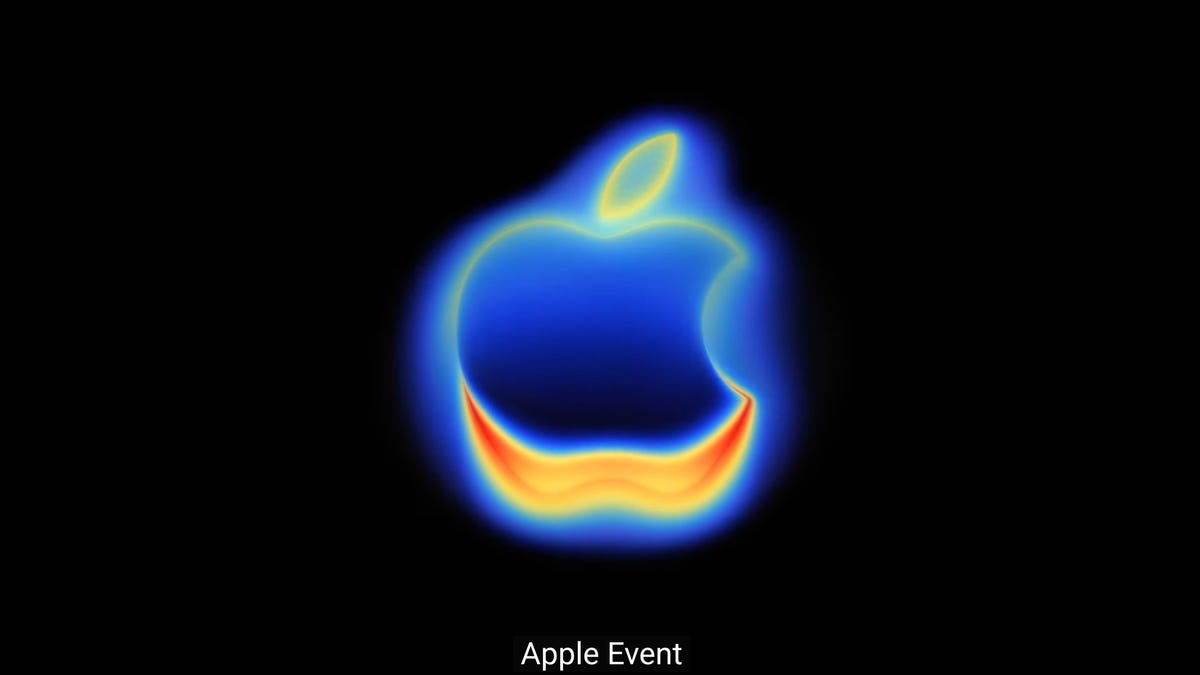
From cosmic orange to coffee brown? Brown, purple and burgundy will be the available colors for the iPhone 18 Pro next September, if a leak out of China proves true.
Depending on your language translator, brown could mean simply «brown» or «coffee brown,» but you get the general idea. The tidbit comes from regular leaker Digital Chat Station’s post on the Chinese microblogging platform Weibo. The post also says that black will not be an available color for the iPhone 18 Pro.
A representative for Apple did not immediately respond to a request for comment.
The iPhone 17 Pro comes in cosmic orange, deep blue and silver.
Don’t miss any of our unbiased tech content and lab-based reviews. Add CNET as a preferred Google source.
The Apple release schedule for the iPhone 18 series has been shifting, but the latest intel reports that the iPhone 18 Pro, iPhone 18 Pro Max and iPhone Fold will launch in September 2026. The iPhone 18 and iPhone 18e will follow in the spring of 2027.
If Digital Chat Station’s leak is accurate, the iPhone 18 Pro would be the first Pro edition in years without a color resembling black, white or silver.
Here are the colors for the iPhone Pro dating back to its introduction in 2019:
2019: iPhone 11 Pro/Pro Max: Midnight Green, Space Gray, Silver, Gold
2020: iPhone 12 Pro/Pro Max: Graphite, Silver, Gold, Pacific Blue
2021: iPhone 13 Pro/13 Pro Max: Graphite, Gold, Silver, Sierra Blue, Alpine Green (March 2022)
2022: iPhone 14 Pro/14 Pro Max: Space Black, Silver, Gold, Deep Purple
2023: iPhone 15 Pro/15 Pro Max: Black Titanium, White Titanium, Blue Titanium, Natural Titanium
2024: iPhone 16 Pro/16 Pro Max: Black Titanium, Natural Titanium, White Titanium, Desert Titanium
2025: iPhone 17 Pro/17 Pro Max: Cosmic Orange, Deep Blue, Silver
Not offering any version of black for Pro models might seem counterintuitive, since the iPhone 16 Pro Max black titanium version has been a big seller, and black has also been popular with iPhone 17 shoppers. But a lack of black has not hurt iPhone 17 Pro sales.
-

 Technologies3 года ago
Technologies3 года agoTech Companies Need to Be Held Accountable for Security, Experts Say
-

 Technologies3 года ago
Technologies3 года agoBest Handheld Game Console in 2023
-

 Technologies3 года ago
Technologies3 года agoTighten Up Your VR Game With the Best Head Straps for Quest 2
-

 Technologies4 года ago
Technologies4 года agoVerum, Wickr and Threema: next generation secured messengers
-

 Technologies4 года ago
Technologies4 года agoBlack Friday 2021: The best deals on TVs, headphones, kitchenware, and more
-

 Technologies4 года ago
Technologies4 года agoGoogle to require vaccinations as Silicon Valley rethinks return-to-office policies
-

 Technologies4 года ago
Technologies4 года agoOlivia Harlan Dekker for Verum Messenger
-

 Technologies4 года ago
Technologies4 года agoiPhone 13 event: How to watch Apple’s big announcement tomorrow



